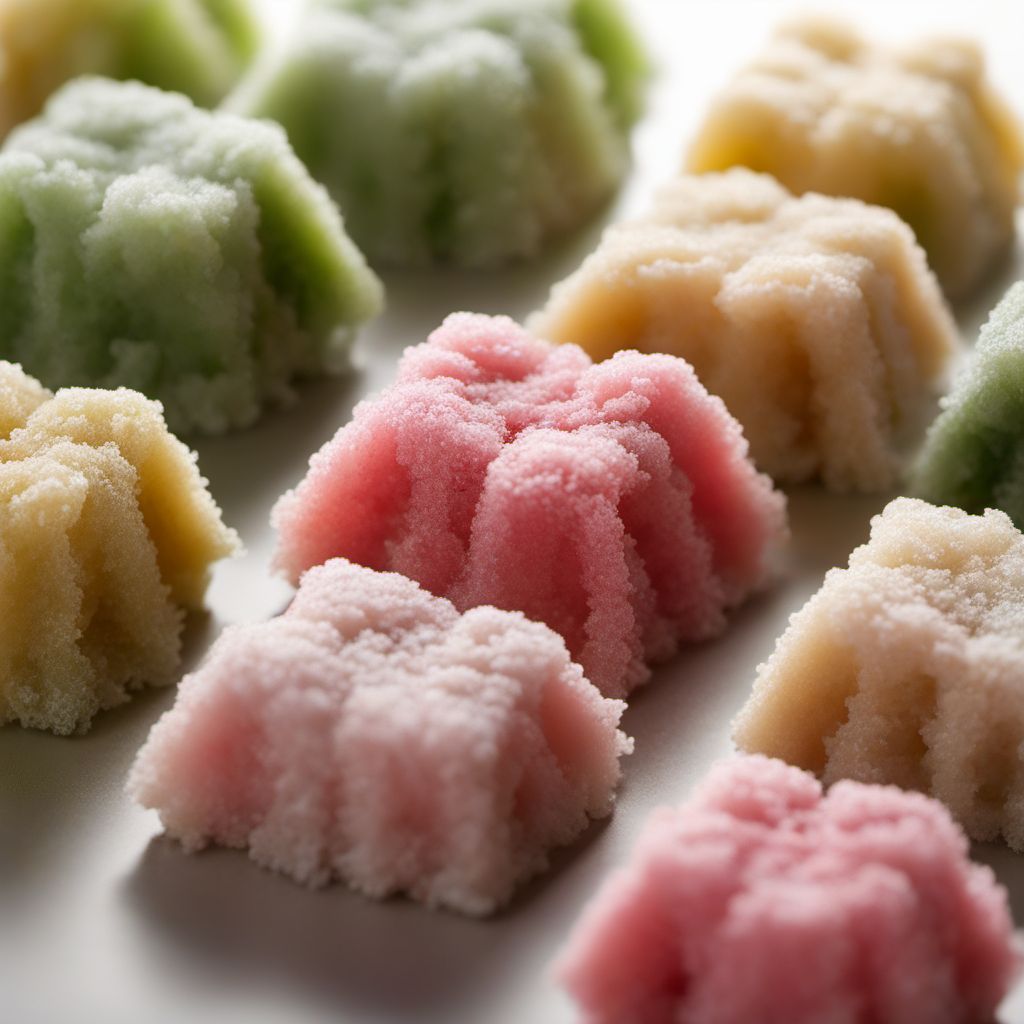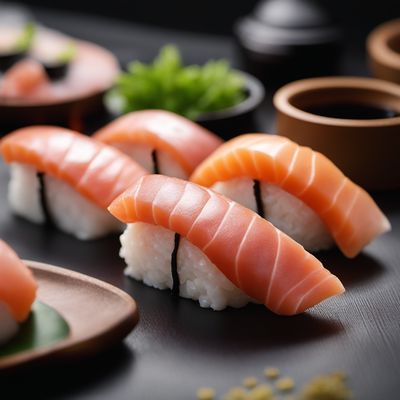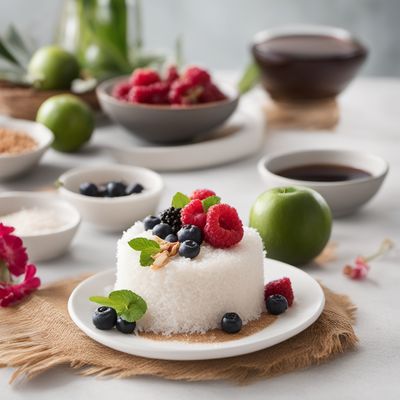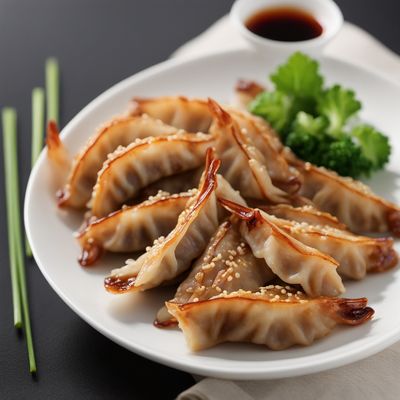
Recipe
Higashi (Japanese Traditional Dry Sweets)
Delicate Blossoms: Crafting the Art of Higashi
4.3 out of 5
Indulge in the delicate world of Japanese confectionery with Higashi, a traditional dry sweet that embodies the essence of Japanese cuisine. These intricately designed treats are not only visually stunning but also offer a subtle balance of flavors and textures.
Metadata
Preparation time
30 minutes
Cooking time
0 minutes
Total time
24-48 hours (including drying time)
Yields
12 servings
Preparation difficulty
Medium
Suitable for
Vegetarian, Vegan, Gluten-free, Dairy-free, Nut-free
Allergens
N/A
Not suitable for
Paleo, Keto, Low-carb, High-protein, High-fat
Ingredients
-
200g (1 1/2 cups) rice flour 200g (1 1/2 cups) rice flour
-
100g (1/2 cup) sugar 100g (1/2 cup) sugar
-
100ml (1/2 cup) water 100ml (1/2 cup) water
-
Assorted natural flavorings (matcha, yuzu, sakura, etc.) Assorted natural flavorings (matcha, yuzu, sakura, etc.)
-
Food coloring (optional) Food coloring (optional)
-
Cornstarch (for dusting) Cornstarch (for dusting)
Nutrition
- Calories (kcal / KJ): 120 kcal / 502 KJ
- Fat (total, saturated): 0g, 0g
- Carbohydrates (total, sugars): 30g, 10g
- Protein: 1g
- Fiber: 0g
- Salt: 0g
Preparation
-
1.In a mixing bowl, combine the rice flour and sugar.
-
2.Gradually add water while stirring until a smooth dough forms.
-
3.Divide the dough into smaller portions and add different natural flavorings to each portion.
-
4.Knead the dough until the flavors are evenly incorporated.
-
5.If desired, add a few drops of food coloring to enhance the visual appeal.
-
6.Dust a clean surface with cornstarch and roll out the dough to a thickness of about 5mm.
-
7.Use various molds or cutters to shape the dough into intricate designs.
-
8.Place the shaped Higashi on a tray lined with parchment paper.
-
9.Allow the Higashi to dry at room temperature for 24-48 hours until they become firm and dry.
-
10.Once completely dry, store the Higashi in an airtight container to maintain their freshness.
Treat your ingredients with care...
- Rice flour — Ensure that the rice flour is finely ground for a smoother texture in the Higashi.
- Natural flavorings — Experiment with different flavors such as matcha (green tea), yuzu (citrus), sakura (cherry blossom), or any other natural extracts to create a variety of Higashi with unique tastes.
- Food coloring — Use food coloring sparingly to maintain the delicate appearance of the Higashi.
Tips & Tricks
- To achieve the desired delicate texture, make sure the Higashi are thoroughly dried before storing.
- Experiment with different shapes and designs to create a visually appealing assortment of Higashi.
- Serve Higashi with a cup of green tea to complement their subtle flavors.
- Store the Higashi in an airtight container to maintain their freshness and prevent them from becoming too soft.
- If the dough becomes too sticky while kneading, dust your hands with rice flour to prevent sticking.
Serving advice
Arrange the Higashi on a beautiful Japanese lacquerware tray or a ceramic plate with traditional Japanese motifs. Serve them alongside a cup of freshly brewed green tea for an authentic Japanese tea ceremony experience.
Presentation advice
Arrange the Higashi in a visually pleasing pattern, showcasing the different shapes and colors. Consider incorporating natural elements such as cherry blossoms or leaves as a decorative touch. Use a minimalist aesthetic to highlight the simplicity and elegance of the Higashi.
More recipes...
For Japanese cuisine » Browse all
More Japanese cuisine dishes » Browse all

Chirinabe
Chirinabe is a Japanese hot pot dish that is typically made with chicken and vegetables.

Buri nigiri sushi
Adult Yellowtail Nigiri
Buri nigiri sushi is a type of sushi that is made with yellowtail fish. It is a popular sushi dish that is enjoyed by sushi lovers around the world.

Kaki Fry
Fried Oysters
Kaki Fry is a popular Japanese dish that features breaded and fried oysters. The dish is typically served as an appetizer or main course and is...






